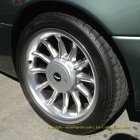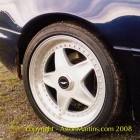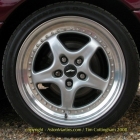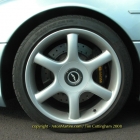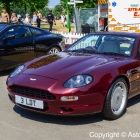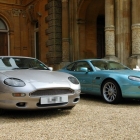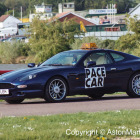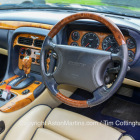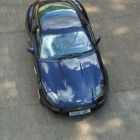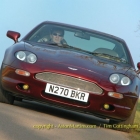Whilst many small modifications have been made to the DB7 during the five years of production, the main changes were made with the introduction of a revised model in July 1996 (air-bagged – ‘Series 2’ perhaps). The later cars are relatively easily spotted as they have twin air bags plus new switchgear, seats, steering, brakes and softer ‘Volante’‘ suspension. A steel bonnet also replaced the composite original. Yet externally, the car appeared virtually identical to the motor show prototype.
DB7’s are seen with a wide variety of wheel options. Here are a few examples that I have seen including a few very rare styles. The DB7 i6 has the widest variety of factory standard and optional wheel styles ever available on an Aston Martin at the time.
During 1999 the V12 Vantage was introduced at a price of just £92,500, a tiny £7550 premium over the straight six. Whilst the supercharged 6 cylinder car oddly remained in the price list throughout 2000, production had quietly ceased during May 1999 and the DB7 Vantage came on-line. By this time, production of the i6 coupe and Volante combined had reached 2473 cars. Of this number, 1578 were coupes and of these coupes, less than half, 529 had the desirable 5 speed manual transmission. At the time, the i6 production run had exceeded that of any other Aston Martin model although when considered against the numbers built from 2004, the DB7 i6 is in actual fact, quite a rare car.






